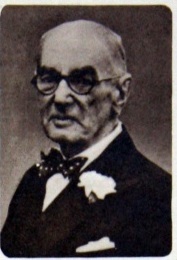The son of a German-born wine-merchant and later architect, who was an assistant to the famous Edwin Landseer Lutyens, Ormerod Maxwell Ayrton started his art career in his home-town at Chester and then moved to London where he studied at the South Kensington Schools of the Royal College of Art. He was elected a Fellow of the Royal Institute of British Architects in 1920. Ayrton’s most notable public buildings, amongst many, were Twickenham Bridge and the old Wembley Stadium, a simple structure in reinforced concrete, and the British Empire Exhibition. His exhibit at the 1948 Olympics was entitled - Model for “County Borough of Derby” – and was based on Derby Council’s vision for a new “Wembley of the North”. Ayrton drew up plans in 1946 for the new stadium to replace the existing Municipal Sports Stadium on the outskirts of the city, but the scheme never came to fruition. Ayrton’s son Tony was a well known scenic painter before becoming an established portrait and landscape artist. He died in Tunisia during World War II after contracting meningitis.

 Great Britain
Great Britain GBR
GBR GBR
GBR